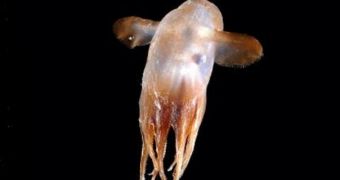Scientists have known for a very long time that there are literally thousands of species of unknown creatures living in the ocean, at impressive depths, without having ever seen the light of day. In a new set of investigations, carried out for the Census of Marine Life initiative, scientists have found no less than 17,650 ocean species living 5,000 meters, or about three miles, under the surface, in frigid temperatures and complete blackness.
Even the researchers say that they were impressed by the amount of species that was discovered, and that the findings were unexpected. Evolution indeed seems to have gone out of its way to ensure that a very large number of animals adapts to this environment, taking various evolutionary pathways in the process. The new animals were discovered through the use of vanguard technologies, such as deep-towed cameras, and advanced sonars, which gave scientists access to a world they'd never seen before. The Census of Marine Life, which is scheduled to drop at the end of 2010, will be the most advanced and complete scientific tool of the ocean and its inhabitants.
The 17,650 species that were found at the boundary include various types of crabs, shrimps and worms, among other creatures. Because nothing else lives at those depths, the creatures have adapted to consuming the most improbable foods, such as bacteria that break down methane, whale bones, dropping from sunlit areas above, and other such things. The Census contains dedicated projects for various areas of the ocean, including the water near shores, the submerged mountain ranges of the Atlantic, the ocean's mid-ridge, its sandy floor, and so on.
“Abundance is mostly a function of available food and decreases rapidly with depth. The continental margins are where we find the transition from abundant food made by photosynthesis to darkened poverty. The transitions display the intriguing adaptations and survival strategies of amazing species,” Louisiana State University expert Robert S. Carney says. Together with colleague Myriam Sibuet, from France, the expert has been the co-leader of the Census project COMARGE, which aims at studying life along the world's continental margins.

 14 DAY TRIAL //
14 DAY TRIAL //